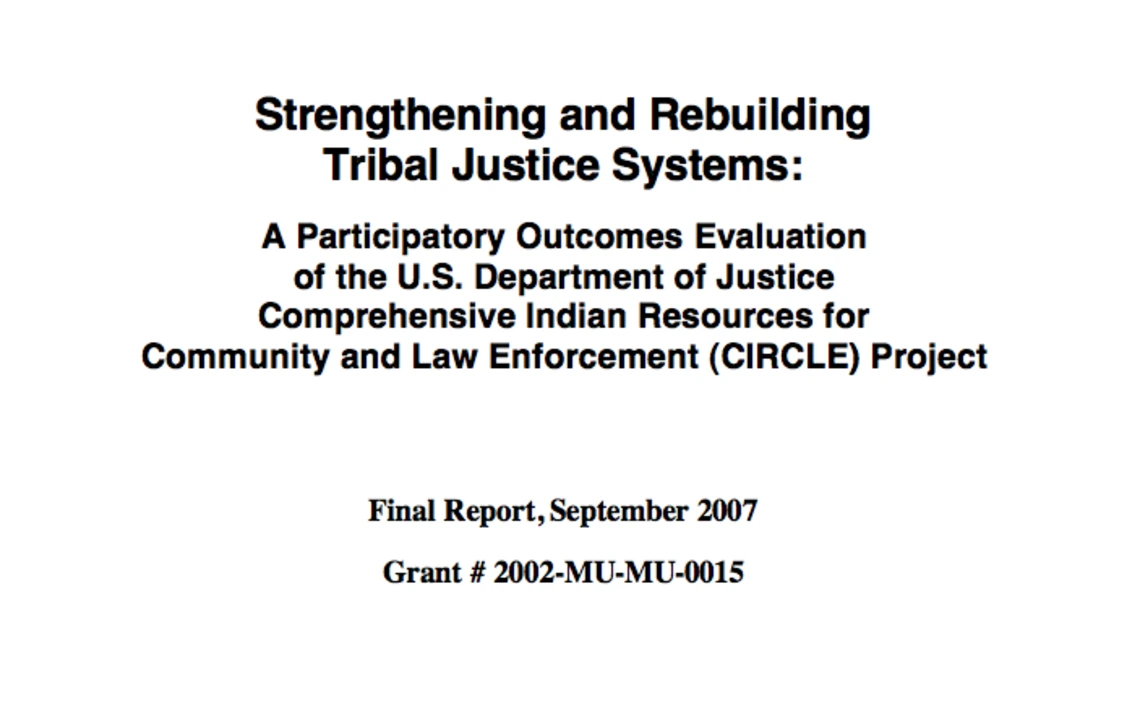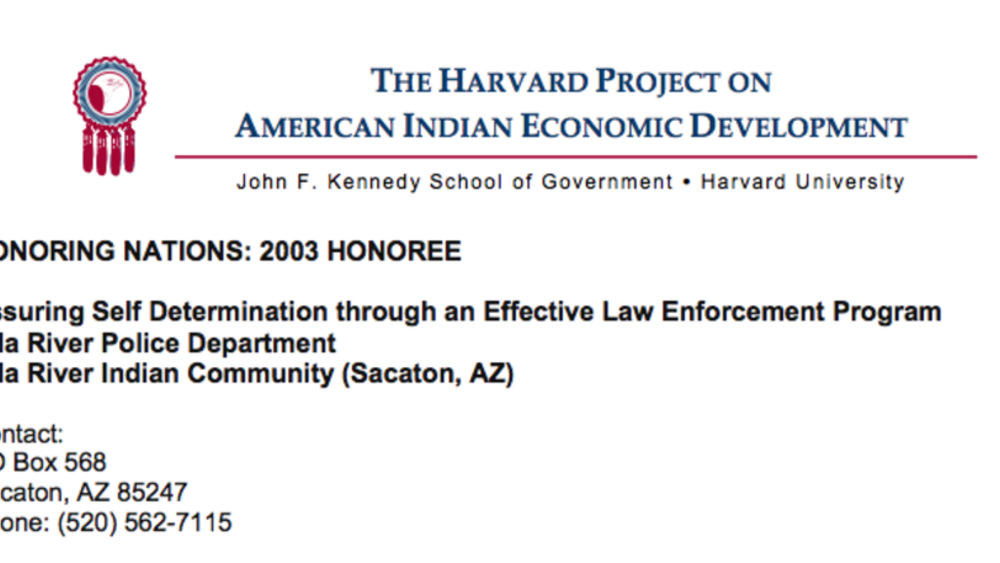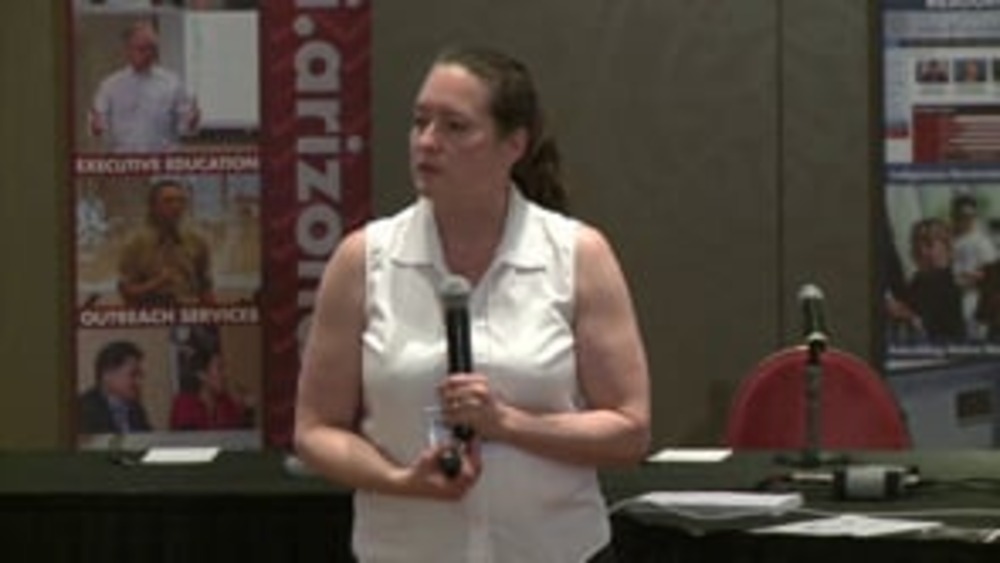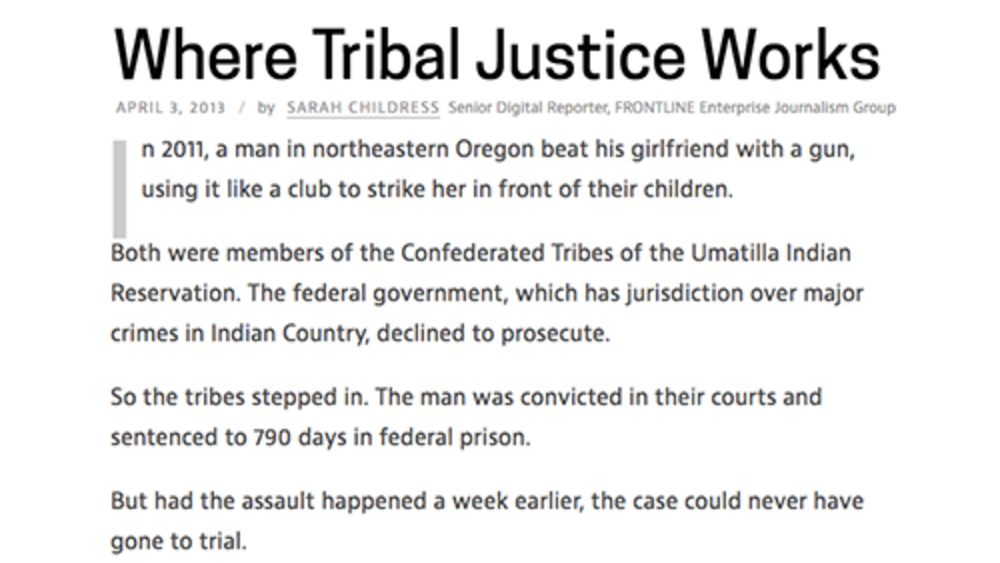Assesses the U.S Department of Justice's Comprehensive Indian Resources for Community and Law Enforcement (CIRCLE) Project, which aimed to help participating tribes implement strategies for making the individual components of their justice systems work better in addressing crime and related social problems.
Additional Information
Wakeling, Stewart, Miriam Jorgensen. "Strengthening and Rebuilding Tribal Justice Systems: A Participatory Outcomes Evaluation of the U.S. Department of Justice Comprehensive Indian Resources for Community and Law Enforcement (CIRCLE) Project." CIRCLE Project Outcome Evaluations. Native Nations Institute for Leadership, Management, and Policy at the Udall Center for Studies in Public Policy, The University of Arizona. Tucson, Arizona. September 2007. Final Report.




